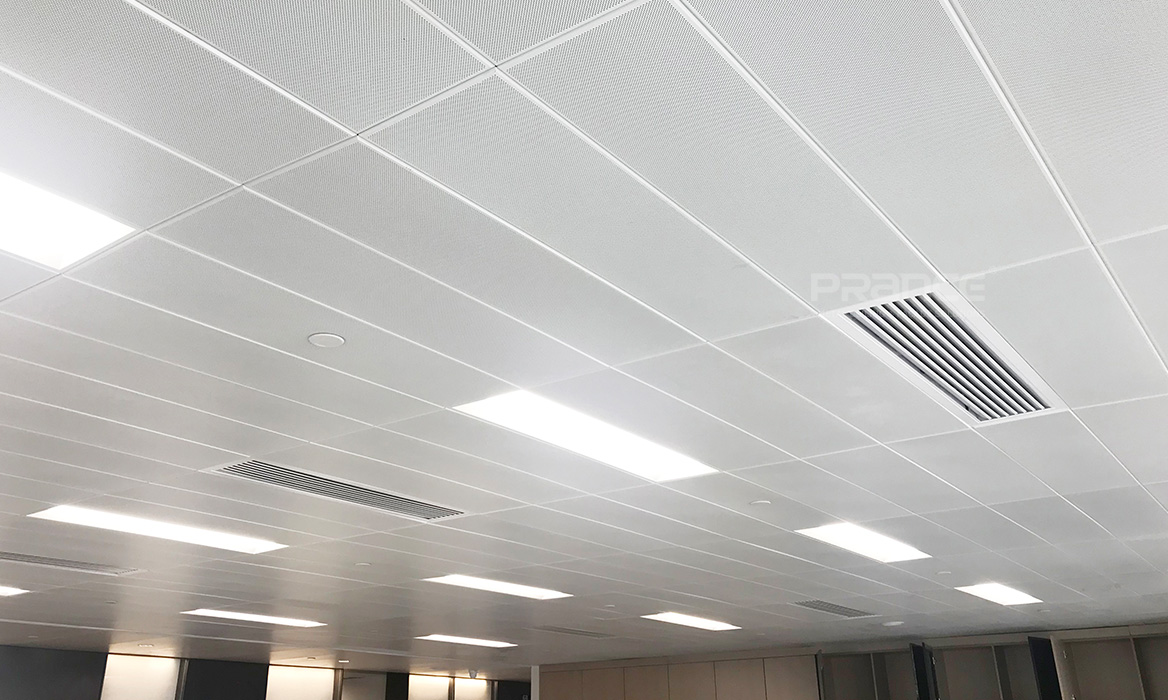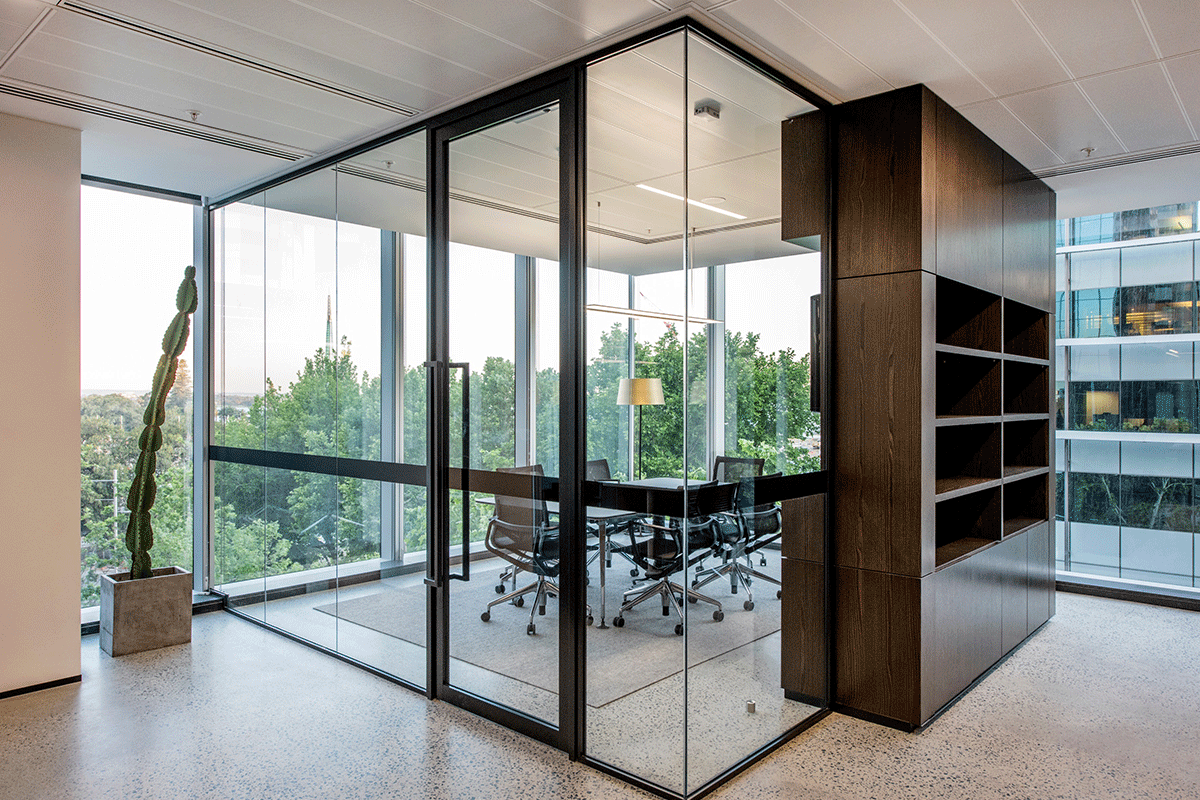PRANCE metalwork is a leading manufacturer of metal ceiling and facade systems.
Ceiling Sound Panels for Enhanced Acoustics
Sound management establishes a harmonized space in offices as well as recording studios and home theaters alike. Sound panels on ceilings have transformed how we control acoustics and decrease undesirable noise distribution throughout many environments. Sound-enhancing panels are incorporated into spaces to provide superior sound quality and build a visually appealing setting.
1. Importance of Acoustics
The Role of Acoustics in Everyday Life
Our auditory experience depends heavily upon sound quality in every surrounding space. Buildings that struggle with poor acoustic performance generate pollution from excess noise along with echoes and difficulty understanding spoken words especially in work settings and classrooms as well as entertainment venues. The improvement of sound environments maintains practical clarity along with well-being and performance capability.
The Science Behind Sound Panels
Professional ceiling sound panels contain a design structure to absorb sound wave energy so that these waves do not reflect off solid surfaces. Sound-absorbing properties make ceiling sound panels successful because they are typically constructed from materials such as fiberglass foam and mineral wool. Acoustic panel systems produce equilibrium sound conditions by regulating both reverberation and echo.
2. Three Benefits of Ceiling Sound Panels

Noise Reduction
Excessive noise damages both attentiveness to work and prevents effective communication. Sound waves find their best absorption through ceiling sound panels that decrease environmental noise effectively. According to a study by the National Institute for Occupational Safety and Health (NIOSH), noise-induced stress in the workplace can lead to a decrease in productivity by up to 15%. In spaces like open offices, restaurants, and hospitals, ceiling sound panels effectively block disruptive noise, promoting a more peaceful atmosphere and improving overall performance.
Enhanced Speech Clarity
Conference rooms and lecture halls expect crystal-clear communication from their acoustic panels. Ceiling sound panels serve to dampen echoes and reverberations which makes spoken speech more precise for easy listening. An Acoustical Society of America reports that acoustic treatment in meeting rooms can enhance speech clarity by 50%, significantly improving the understanding and retention of information.The benefit of acoustic protection enhances workspaces in schools and companies because of its critical relevance.
Aesthetic Appeal
Modern sound panels possess a broad variety of design choices and surface decorations, which enables their seamless incorporation into any room concept. Designers and architects select these panels because they support acoustic enhancement and visual harmony within interior spaces.
3. Applications of Ceiling Sound Panels

Residential Spaces
The sound quality of home theaters alongside living rooms and open kitchens improves when installed with acoustic solutions. The proper sound absorption characteristics of ceiling sound panels produce better home theater acoustics while blocking noise between connecting rooms.
Commercial Environments
The widespread usage of ceiling sound panels throughout commercial buildings helps produce both comfortable environments and productive workspaces. Such panels cut excess noise thus promoting superior communication quality while limiting interferences.
Educational Institutions
Room dimensions combined with architectural features lead to sound struggles throughout classrooms and similar spaces. Acoustic panels enable the creation of learning-friendly auditory environments through meaningful sound enhancement.
Entertainment Venues
Modern music production environments and cinema spaces depend entirely on excellent acoustic conditions. Ceiling sound panels become essential because they maintain sound quality by both reducing noise and managing echo reflections in sound design applications.
4. Types of Ceiling Sound Panels

Metal Acoustic Panels
These metal acoustic panels succeed in decreasing noises throughout extensive areas after installation from ceiling anchors. The design flexibility of these panels allows users to customize their appearance according to their space aesthetic. Watch the following video and know more about this soud absorption solutions.
Direct-Attach Panels
Direct-attach panels function because they receive mounting instructions to attach straight onto ceilings. The panels fit perfectly into restricted ceiling spaces because they deliver outstanding sound absorption capabilities while maintaining beautiful designs.
Custom Acoustic Solutions
Building-specific acoustic requirements drive the production of custom-designed ceiling sound panels for unique spaces. Each panel adjusts to match the size and floor plan dimensions to achieve maximum performance goals.
Wise selection of ceiling sound panels starts with first identifying the required acoustic solutions for each specific space.
5. Understand your Acoustic Requirements
A specific combination of acoustical requirements exists for each space. The initial step for right panel selection begins with determining what specific acoustic problems exist, either through echo or noise pollution or impaired sound clarity.
Material and Design
When selecting ceiling sound panels material selection acts as a fundamental requirement for achieving their desired performance levels. Fiberglass and foam materials stand out because they excel at sound absorption. Room decor should be the guiding factor when choosing acoustic panels.
Professional Installation
Professionals help with maximizing panel placement, which leads to superior performance throughout the installation process. Specialists evaluate spaces to determine optimal acoustic configurations that generate maximum sound absorption results.
6. Maintenance of Ceiling Sound Panels
Cleaning and Upkeep
Uniform cleaning operations are vital because they protect both the appeal and operational quality of panel systems. Continuous dust and dirt accumulation leads to reduced performance in these products. The majority of acoustic panels are capably cleaned through vacuuming as well as wiping with damp cloths.
Longevity
Sound panels that meet high-quality standards possess durability characteristics that enable them to survive for several years when people take proper maintenance steps. Thorough inspections will spot upcoming damage so the acoustic control systems can continue to perform their sound management features effectively.
Trends of Ceiling Sound Panels in 2025

Acoustic technology advancements have revolutionized the process of designing efficient, sustainable sound panels for the future. The demand for eco-friendly building practices has boosted the growing popularity of sustainable acoustic solutions alongside environmentally friendly construction materials.
FAQs
Q1.Where is the best place to install ceiling sound panels?
Ceiling sound panels work in diverse environments, including classrooms, offices, restaurants, and home theaters. Installing them in noise-prone or echo-heavy areas brings the best results.
Q2.Can sound absorbing ceiling panels be customized for design and branding?
Yes, modern acoustic solutions allow customization in shape, color, and surface finish. Businesses often select sound absorbing ceiling panels that match their interiors or highlight brand identity.
Q3.What is the proper method to maintain ceiling sound panels?
Maintaining sound reducing ceiling panels is simple. Light vacuuming or gentle wiping with a damp cloth removes dust without damaging acoustic properties. For high-traffic areas, regular inspections ensure sound dampening panels for ceiling use remain effective in controlling noise and maintaining clean appearances.
Q4.How do sound dampening panels for ceiling areas work?
Sound dampening panels for ceiling spaces absorb and diffuse sound waves, preventing them from bouncing across hard surfaces. By capturing vibrations within their dense materials, these panels reduce echoes and unwanted background noise.
Q5.How to choose the right ceiling sound panels?
Selecting the right ceiling sound panels depends on your space’s acoustic requirements, room size, and design preferences. Sound absorbing ceiling panels are ideal for reducing echo, while sound dampening panels for ceiling areas work best in open-plan offices or restaurants. Consider acoustic materials,thickness, and installation type. Matching panels to both functional needs and aesthetic goals ensures optimal sound control and visual harmony in any environment.





















